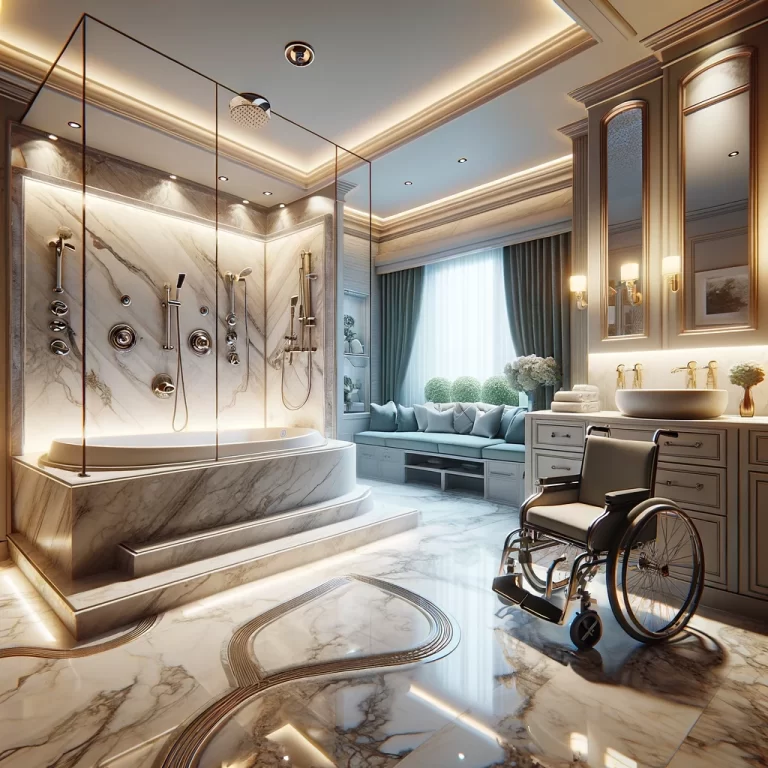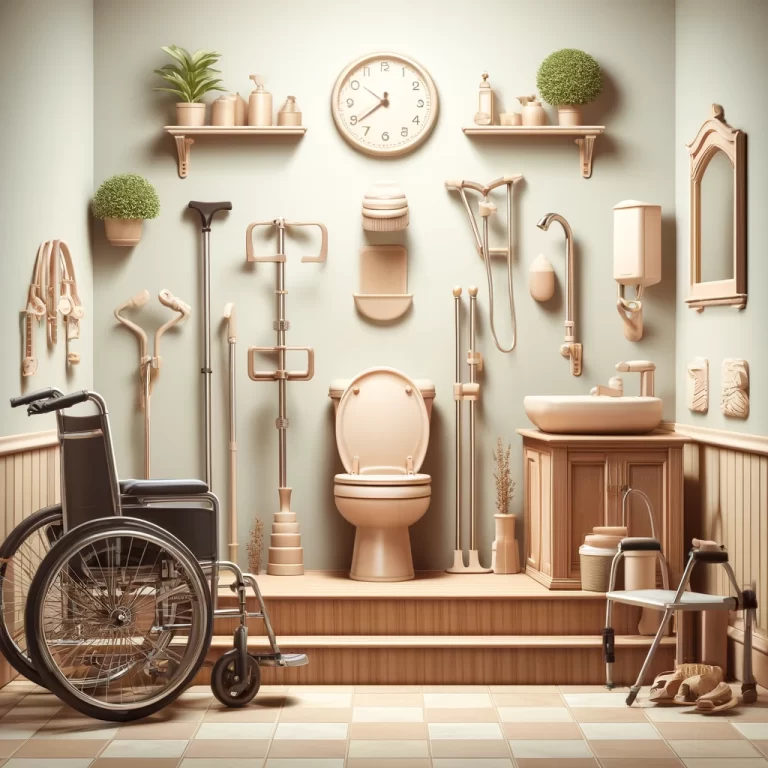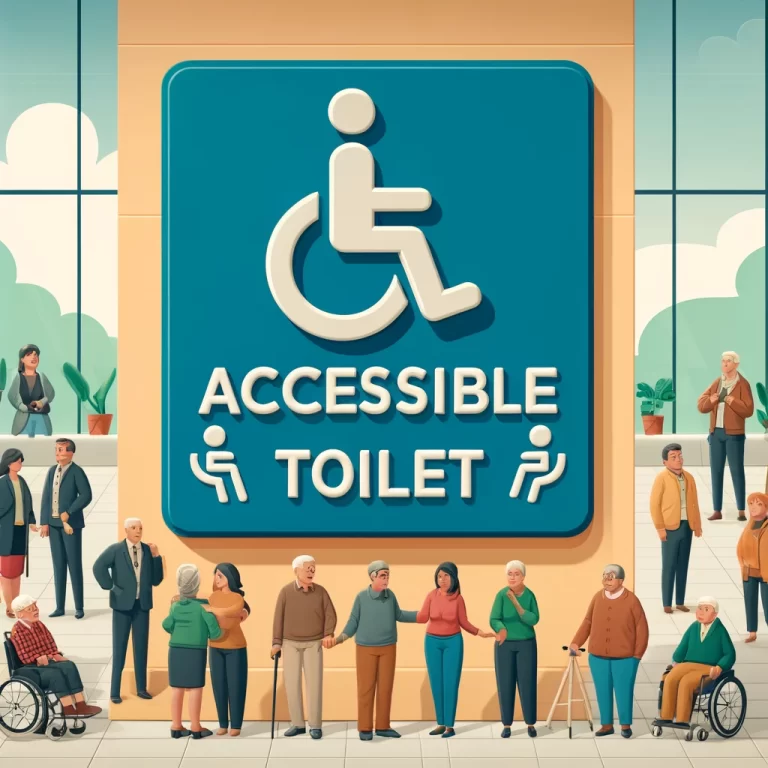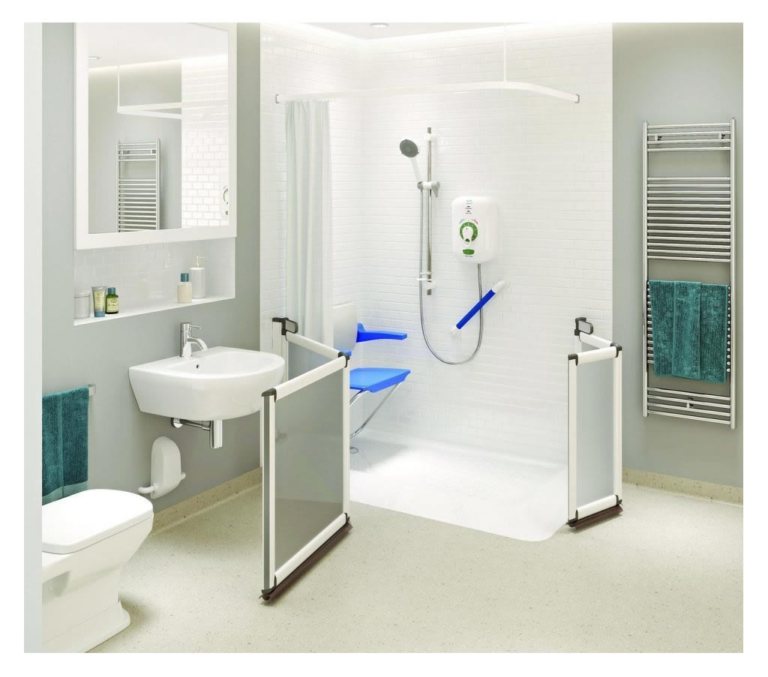What is a mobility bathroom
Are you or a loved one facing mobility challenges that make using a traditional bathroom difficult? If so, consider creating a mobility bathroom. We will explore the importance of mobility bathrooms, the key features that make them accessible, and different types of mobility bathrooms to choose from. Whether you’re looking to make your current bathroom more user-friendly or planning a new bathroom design, this article will provide you with valuable insights and tips for creating a safe and accommodating space.
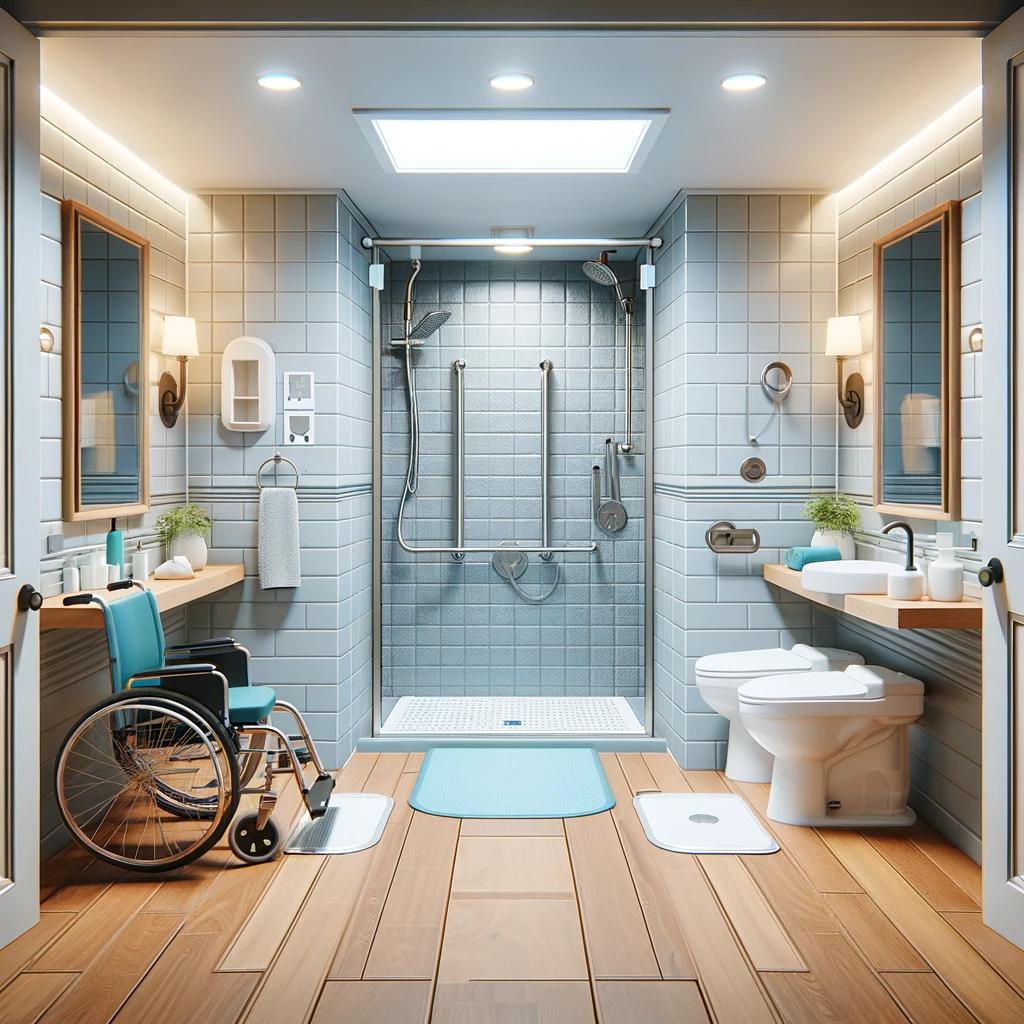
What Is a Mobility Bathroom?
A mobility bathroom is designed to cater to individuals with mobility challenges, offering specialist products that enhance independence, dignity, and safety.
These bathrooms are carefully planned to provide functional and accessible features, such as grab bars, non-slip flooring, and walk-in showers that eliminate the need to step over a high threshold.
The primary goal is to make daily routines easier and safer for individuals who may have difficulty moving around or navigating traditional bathroom setups.
By customising the space to meet specific needs, mobility bathrooms promote autonomy and convenience, allowing users to maintain their personal hygiene with reduced assistance.
Why Is a Mobility Bathroom Important?
A mobility bathroom holds significant importance for individuals seeking to regain independence, maintain dignity, and cater to the needs of wheelchair users.
By providing specialised features such as grab bars, roll-in showers, and adjustable sink heights, mobility bathrooms are designed to accommodate varying levels of mobility challenges. These adaptations not only make daily routines more manageable but also promote a sense of confidence and autonomy for users. The layout and design of mobility bathrooms prioritise safety and accessibility, ensuring that individuals can navigate the space comfortably and independently. For wheelchair users, these bathrooms offer the necessary space and equipment to move around freely, without limitations.
Accessibility for Individuals with Mobility Issues
Accessibility in mobility bathrooms is essential for individuals with mobility issues, ensuring that they can navigate and use the facilities comfortably.
When designing a mobility bathroom, it is crucial to incorporate features that support ease of movement and independence for users with varying levels of mobility. Installing grab bars strategically placed at appropriate heights provides stability and support for individuals to safely transfer from a wheelchair to a toilet or shower. Along with grab bars,
- roll-in showers with zero-threshold entries offer seamless wheelchair access while promoting safety.
Lever handles on taps and doorways allow for easy operation without the need for tight grasping or twisting motions.
Safety and Independence for Elderly Individuals
Safety and independence are paramount in mobility bathrooms, especially for elderly individuals looking to regain autonomy and address ageing-related concerns.
One essential aspect to consider in creating a safe and independent mobility bathroom is the incorporation of grab bars and rails strategically placed for support and stability. Installing a walk-in shower with a seating option can enhance safety while maintaining convenience. A raised height toilet with handrails can significantly improve accessibility and reduce the risk of falls.
Accommodations for Individuals with Disabilities
Mobility bathrooms provide essential facilities for individuals with disabilities, fostering inclusivity within the home environment.
Incorporating features such as grab rails, non-slip flooring, adjustable shower heads, and wider doorways, mobility bathrooms ensure a safe and accessible space for individuals with varying degrees of disability. These modifications not only enhance independence but also promote confidence and dignity in carrying out daily personal care tasks. The flexibility in design allows for customisation to cater to specific needs, making the bathroom a functional and comfortable area for all occupants. Overall, mobility bathrooms play a crucial role in creating a welcoming and inclusive home environment for everyone.
What Are the Features of a Mobility Bathroom?
The features of a mobility bathroom include grab rails, walk-in showers, and non-slip flooring, all aimed at enhancing safety and accessibility.
Grab rails are strategically placed within the bathroom to provide support and stability for individuals with limited mobility. They offer a secure grip for balance when moving around the space.
Walk-in showers eliminate the need to step over a high threshold, making entry and exit easier and safer. The non-slip flooring ensures grip even when wet, reducing the risk of slips and falls.
These elements collectively create a comfortable and secure environment, promoting independence for those with mobility challenges. They are designed to accommodate various needs and preferences, ultimately enhancing the overall bathroom experience.
Grab Bars and Handrails
Grab rails and handrails are essential fixtures in mobility bathrooms, providing crucial support and stability for individuals with mobility needs.
These safety features play a vital role in preventing slips and falls, particularly for seniors or those with physical disabilities.
Installing grab rails and handrails near toilets, showers and baths can significantly reduce the risk of accidents, offering peace of mind and independence to users. They are designed to bear weight and provide a secure grip, making it easier for individuals to navigate the bathroom safely.
Walk-in Showers or Bathtubs
Walk-in showers or baths offer convenience and accessibility in mobility bathrooms, catering to individuals with varying mobility requirements.
For individuals with limited mobility, the low threshold design of walk-in showers eliminates the need to step over a high bath wall, reducing the risk of slips and falls. The spacious layout allows for easy manoeuvrability with grab rails strategically placed for added support and stability. With customisable features such as seating options and handheld shower heads, these fittings provide a comfortable and safe bathing experience. Whether for ageing adults looking to age in place or individuals with disabilities seeking independence, walk-in showers or baths are a practical solution that enhances daily living.
Non-slip Flooring
Non-slip flooring is a crucial safety feature in mobility bathrooms, reducing the risk of slips and falls for individuals with mobility challenges.
In terms of designing a bathroom for individuals with mobility limitations, the choice of flooring material can significantly impact safety and accessibility. The non-slip flooring not only offers grip under wet conditions but also provides stability for those who may struggle with balance. By minimising the chances of accidents such as slipping or tripping, this feature plays a vital role in creating a secure environment where individuals can navigate with confidence and independence.
Adjustable Showerheads and Faucets
Adjustable showerheads and taps provide flexibility and comfort in mobility bathrooms, catering to the diverse needs of users with mobility challenges.
One of the key advantages of these adjustable fixtures is their ability to accommodate individual preferences. Whether someone prefers a gentle rainfall-like shower or a more focused stream for targeted cleaning, these fixtures can be easily adjusted to suit their needs. This customisation not only enhances comfort but also promotes independence and dignity for users, allowing them to control their bathing experience.
The adaptability of adjustable showerheads and taps makes them ideal for meeting the specific requirements of users with mobility limitations. By providing options for height, angle, and water flow, these fixtures can be tailored to suit individuals with varying levels of mobility, ensuring a safer and more accessible bathing environment.
Raised Toilet Seats
Raised toilet seats enhance accessibility and ease of use in mobility bathrooms, ensuring comfort and convenience for individuals with mobility needs.
One of the main benefits of raised toilet seats is that they provide a higher sitting position, making it easier for individuals with limited mobility to sit down and stand up. This added height can significantly reduce strain on joints and muscles, promoting better posture and reducing the risk of falls.
In addition, raised toilet seats are designed to fit securely on existing toilets, offering stability and support to those who may have difficulty balancing or transferring onto the toilet. This added stability can boost confidence and independence, allowing individuals to use the toilet with greater ease and peace of mind.
Wheelchair Accessibility
Wheelchair accessibility is a key feature in mobility bathrooms, facilitating ease of use and navigation for individuals dependent on wheelchairs.
Having proper wheelchair accessibility not only ensures inclusivity but also promotes independence and dignity for those with mobility challenges. Features such as grab bars at suitable heights, non-slip flooring, and wider doorways are essential components that make a bathroom truly accessible. Installing a roll-in shower with a fold-down seat and handheld showerhead can further enhance the usability and comfort for wheelchair users.
How Can You Make Your Bathroom More Accessible?
Enhancing your bathroom’s accessibility involves installing grab rails, non-slip flooring, step-in showers, and a raised WC seat to promote safety and convenience.
In terms of grab rails, make sure they are securely anchored to the wall at appropriate heights for support. Opt for textured or padded rails that provide a good grip. Non-slip flooring can prevent accidents, especially in wet conditions; consider using options like slip-resistant tiles or mats. Step-in showers eliminate the need to step over a bath rim, providing easy access for individuals with mobility challenges. A raised WC seat can make it easier to sit down and stand up, reducing strain on the knees and back.
Installing Grab Bars and Handrails
Start by installing grab bars and handrails in key areas of the bathroom to improve stability and support for individuals with mobility issues.
When installing grab bars, it is essential to choose the appropriate locations. Common areas include beside the toilet, inside the shower or bathtub, and near the sink. These strategic placements ensure that individuals have something to hold onto when transferring in and out of these areas.
- Ensure that the grab bars are securely anchored to wall studs or with the use of sturdy wall anchors to support the weight of the user.
- Consider the height of the grab bars for optimal usability – generally, they should be positioned between 33 and 36 inches from the floor.
- Handrails along walls can provide continuous support for navigating the entire bathroom. They should be mounted at a comfortable height and extend the length of the wall to assist in balance and stability.
Installing these features can significantly enhance safety and independence in the bathroom environment.
Using Non-slip Mats and Flooring
Utilise non-slip mats and flooring to prevent accidents and ensure a secure footing for individuals navigating the bathroom space.
Non-slip mats and flooring play a crucial role in maintaining safety, especially in areas prone to wetness like bathrooms. These features offer traction, reducing the likelihood of slips and falls, thus promoting a secure environment for everyone.
When selecting non-slip mats, opt for ones with sturdy materials and a textured surface to enhance grip. Ensure the mats are properly secured to prevent accidental movements. For flooring, choose materials designed to be slip-resistant to provide stability underfoot.
Installing a Walk-in Shower or Bathtub
Consider installing a walk-in shower or bath to simplify bathing routines and enhance accessibility for individuals with mobility challenges.
Walk-in showers or baths offer a range of benefits for those with limited mobility. These fixtures provide easier entry and exit points compared to traditional setups, reducing the risk of slips and falls. The spacious design of walk-in showers allows for comfortable manoeuvrability, accommodating mobility aids if needed.
The streamlined accessibility of these features promotes independence and self-care, allowing individuals to maintain their bathing routines with ease. The user-friendly controls and non-slip surfaces enhance safety, fostering a secure bathing environment.
Adding a Raised Toilet Seat
Enhance toilet accessibility by adding a raised toilet seat, making it easier and more comfortable for individuals with mobility needs to use the facilities.
One of the key advantages of incorporating a raised toilet seat is the increased height it provides, reducing the strain on joints and muscles when sitting down or standing up. This extra elevation can be particularly beneficial for elderly individuals or those recovering from surgery.
A raised toilet seat can greatly enhance independence by minimising the need for assistance in the bathroom. By reducing the distance between the user and the toilet, it promotes better posture and decreases the risk of falls.
Many raised toilet seats come with padded or contoured designs for added comfort, making the overall bathroom experience more pleasant and ergonomic. This simple yet effective adaptation can significantly improve the quality of life for individuals with mobility challenges.
What Are the Different Types of Mobility Bathrooms?
Different types of mobility bathrooms include traditional designs, wet rooms, and wheelchair-accessible setups, each catering to specific needs and preferences.
- Traditional designs, with their classical aesthetic, offer a familiar and comfortable setting, often equipped with grab rails and non-slip surfaces for added safety.
- On the other hand, wet rooms provide a seamless and spacious shower area, eliminating the need for a traditional step-in shower, making them ideal for those with limited mobility.
- Wheelchair-accessible configurations ensure easy access and manoeuvrability within the bathroom, featuring wider doorways, grab rails strategically positioned, and roll-in showers for maximum convenience.
Traditional Mobility Bathrooms
Traditional mobility bathrooms offer a blend of premium features and stylish designs, providing a timeless and elegant aesthetic for users.
The enduring appeal of traditional mobility bathrooms lies in their meticulous attention to detail and classic charm. These meticulously crafted spaces often incorporate high-quality materials such as marble, porcelain, and brushed metals, exuding luxury and sophistication. From intricate fixtures to intricate tile work, every element is thoughtfully designed to create a cohesive and visually pleasing environment.
Functionality is also a key aspect of these bathrooms, with features like handrails, adjustable shower heads, and non-slip flooring seamlessly integrated to enhance accessibility and safety without compromising style. Users seeking a classic bathroom setup appreciate the harmonious blend of form and function that traditional mobility bathrooms effortlessly deliver.
Wheelchair Accessible Bathrooms
Wheelchair accessible bathrooms are specifically designed to cater to the needs of wheelchair users, offering enhanced accessibility and convenience.
These specially designed bathrooms typically include features such as wider doorways to accommodate wheelchairs, grab bars for support and stability, lower sinks and countertops for easier access, and roll-in showers with seating options.
The layout and placement of fixtures are strategically planned to ensure a safe and user-friendly experience for individuals reliant on wheelchairs, promoting independence and dignity within the bathroom space.
In addition, these bathrooms often incorporate slip-resistant flooring, lever-style tap handles, and ample space for manoeuvrability, all contributing to a more inclusive and accommodating environment for users with mobility challenges.
Walk-in Bathrooms
Walk-in bathrooms prioritise safety and peace of mind, providing users with a barrier-free and secure bathing experience.
The focus on safety in walk-in bathrooms goes beyond just convenience; it is designed to prevent slips and falls, especially for individuals with limited mobility. The easy accessibility of walk-in showers and tubs ensures that users can enter and exit effortlessly, enhancing both independence and comfort. With grab bars strategically placed and non-slip flooring integrated, users can navigate the space confidently, contributing to a more relaxing and stress-free bathing routine.
Wet Rooms
Wet rooms offer a space-saving solution for accessible bathrooms, featuring a functional and versatile design for users with varying mobility needs.
These innovative bathing spaces eliminate the need for a traditional shower tray or bath, creating a seamless and easy-to-access area that enhances both safety and convenience. The open-plan layout of wet rooms allows for wheelchair accessibility and hassle-free maneuverability, making them ideal for individuals with limited mobility or disabilities. The waterproofing features of wet rooms ensure durability and prevent water damage, providing a long-lasting bathing solution that requires minimal maintenance.
Frequently Asked Questions
What is a mobility bathroom?
A mobility bathroom, also known as an accessible bathroom or a handicap bathroom, is a bathroom that is designed and equipped for individuals with mobility impairments. These bathrooms are specifically designed to make it easier for people with disabilities or limited mobility to use the facilities comfortably and safely.
What makes a bathroom a mobility bathroom?
A mobility bathroom typically includes the following features:
- Wider doorways for wheelchair accessibility
- Grab bars for support and stability
- Roll-in showers or walk-in bathtubs
- Lowered sink and countertop
- Toilet with grab bars and/or raised seat
- Non-slip flooring
Who benefits from using a mobility bathroom?
A mobility bathroom benefits individuals with various types of mobility impairments, including but not limited to:
- Wheelchair users
- Elderly individuals
- Individuals with balance or coordination issues
- People with leg injuries or disabilities
- Pregnant women
Is it necessary to have a mobility bathroom in a home?
It is not necessary for every home to have a mobility bathroom. However, it is highly recommended for homes with individuals who have mobility impairments or for individuals who plan to age in place. Having a mobility bathroom can greatly improve the safety and accessibility of the home.
Can a regular bathroom be converted into a mobility bathroom?
Yes, a regular bathroom can be converted into a mobility bathroom. Depending on the level of accessibility needed, modifications may include installing grab bars, widening doorways, and installing a roll-in shower or walk-in bathtub. It is best to consult with a professional contractor for proper installation and design.
Are there any laws or regulations regarding mobility bathrooms?
Yes, there are laws and regulations in place to ensure that public places have accessible bathrooms for individuals with disabilities. These laws include the Americans with Disabilities Act (ADA) in the United States and the Disability Discrimination Act (DDA) in the United Kingdom. These regulations may also apply to private residences if they are used as public accommodations.


